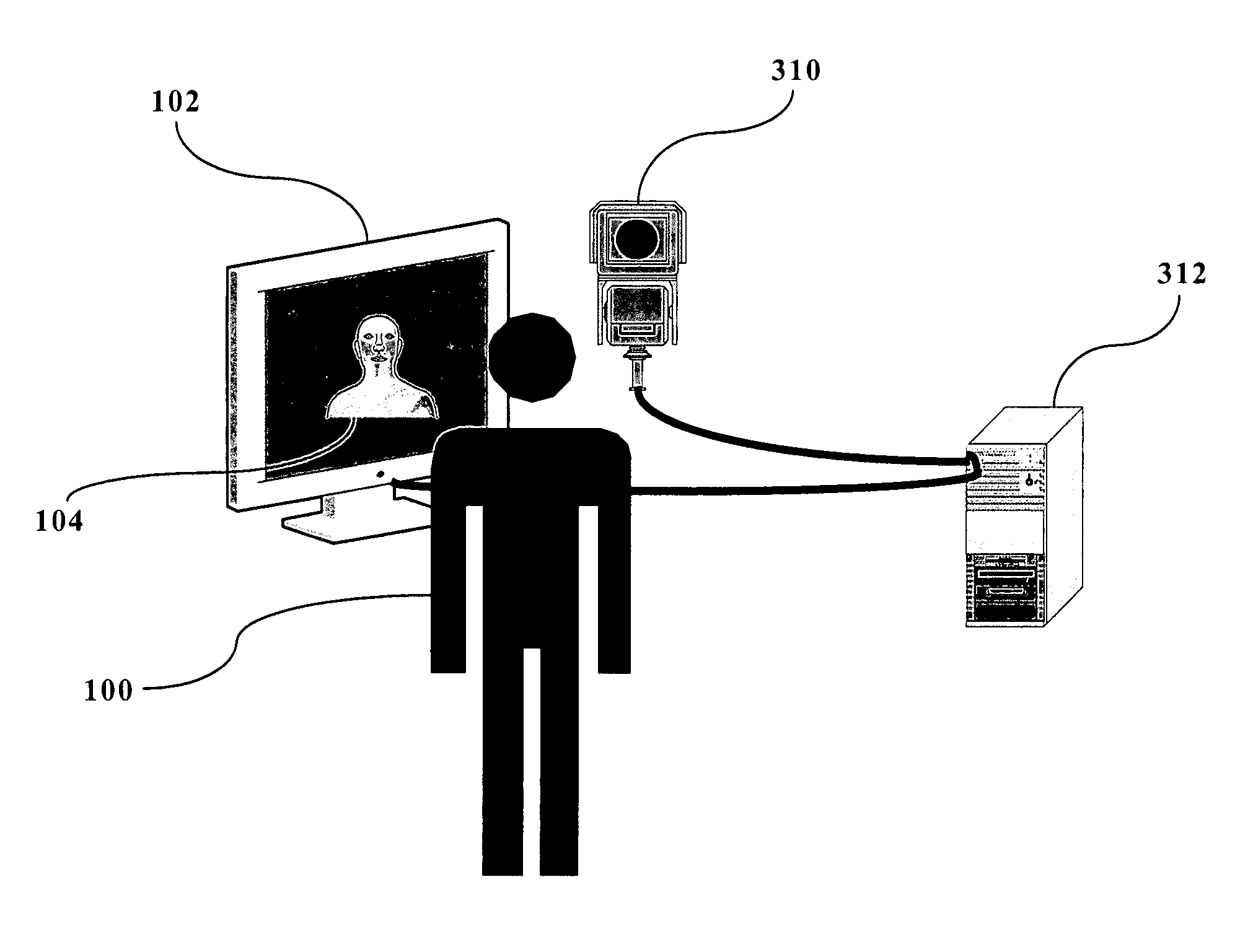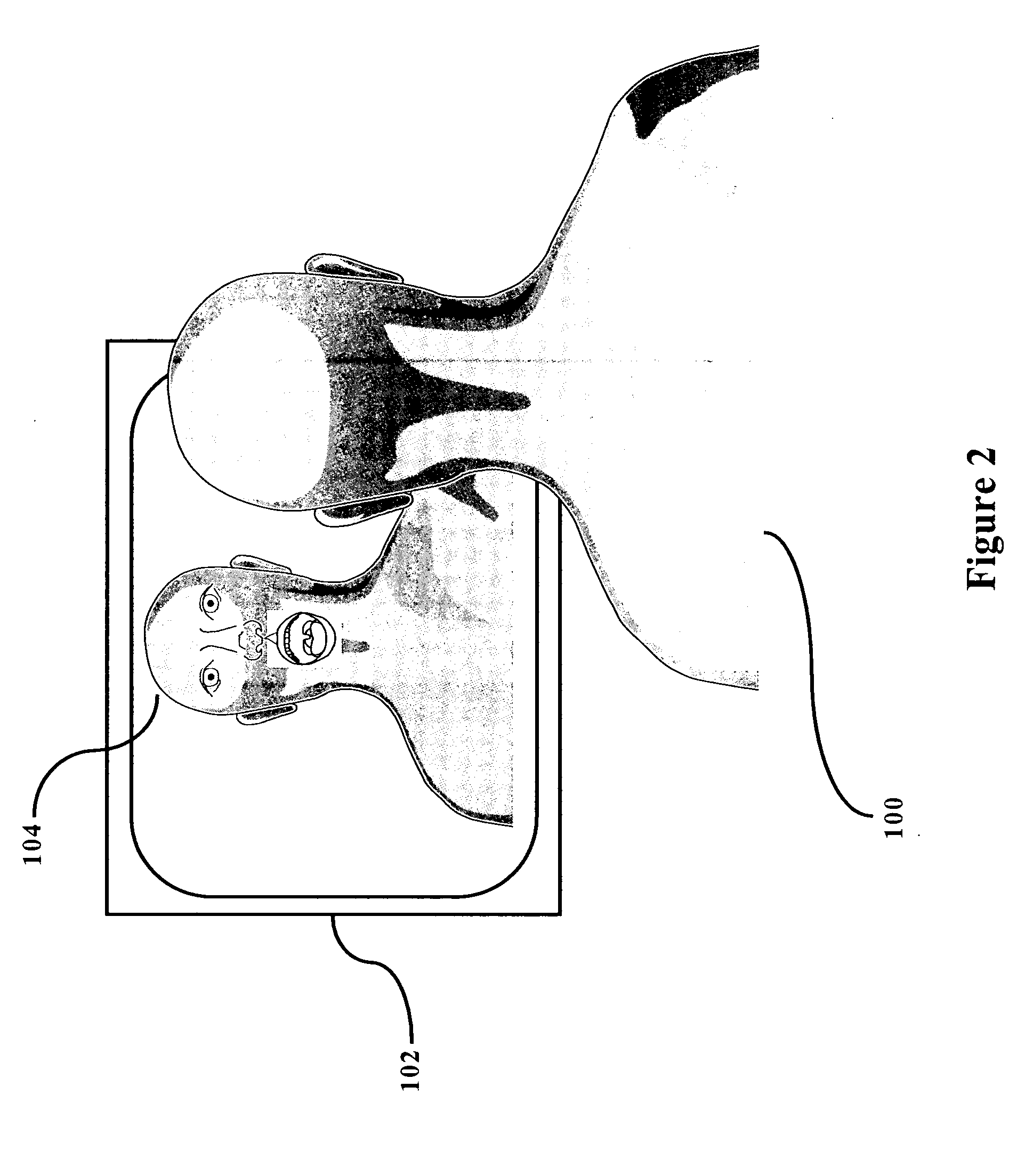System and method for assisting speech development for the hearing-challenged
a technology for hearing-challenged people and speech development, applied in the field of speech-assistance systems and methods, can solve the problems of time-consuming process, deaf or hearing-challenged people's difficulty in learning to talk,
- Summary
- Abstract
- Description
- Claims
- Application Information
AI Technical Summary
Benefits of technology
Problems solved by technology
Method used
Image
Examples
Embodiment Construction
[0013]FIGS. 1 and 2 illustrate, conceptually, the present invention. Referring to FIG. 1, a pupil 100 stands in front of a display screen 102. Display screen 102 is a display device capable of displaying a “mask image”104 resembling the rear view of a human head, a rear view as though the pupil was looking into the back of a mask, or some other similar view giving the pupil the impression that they are essentially looking through a facial image from behind. The mask image 104 can be a holographic image, but the present invention is not limited to holographic images, and any form of image that can display the mask image to the pupil can be utilized.
[0014] In FIG. 1, the mask image 104 includes a full face (eyes, nose, and mouth). It is understood, however, that the face displayed on the mask image 104 can be simplified so that all that can be seen by the pupil is a mouth. FIG. 1 shows the mouth of the mask image 104 in a closed position. Referring now to FIG. 2, FIG. 2 illustrates e...
PUM
 Login to View More
Login to View More Abstract
Description
Claims
Application Information
 Login to View More
Login to View More - R&D
- Intellectual Property
- Life Sciences
- Materials
- Tech Scout
- Unparalleled Data Quality
- Higher Quality Content
- 60% Fewer Hallucinations
Browse by: Latest US Patents, China's latest patents, Technical Efficacy Thesaurus, Application Domain, Technology Topic, Popular Technical Reports.
© 2025 PatSnap. All rights reserved.Legal|Privacy policy|Modern Slavery Act Transparency Statement|Sitemap|About US| Contact US: help@patsnap.com



